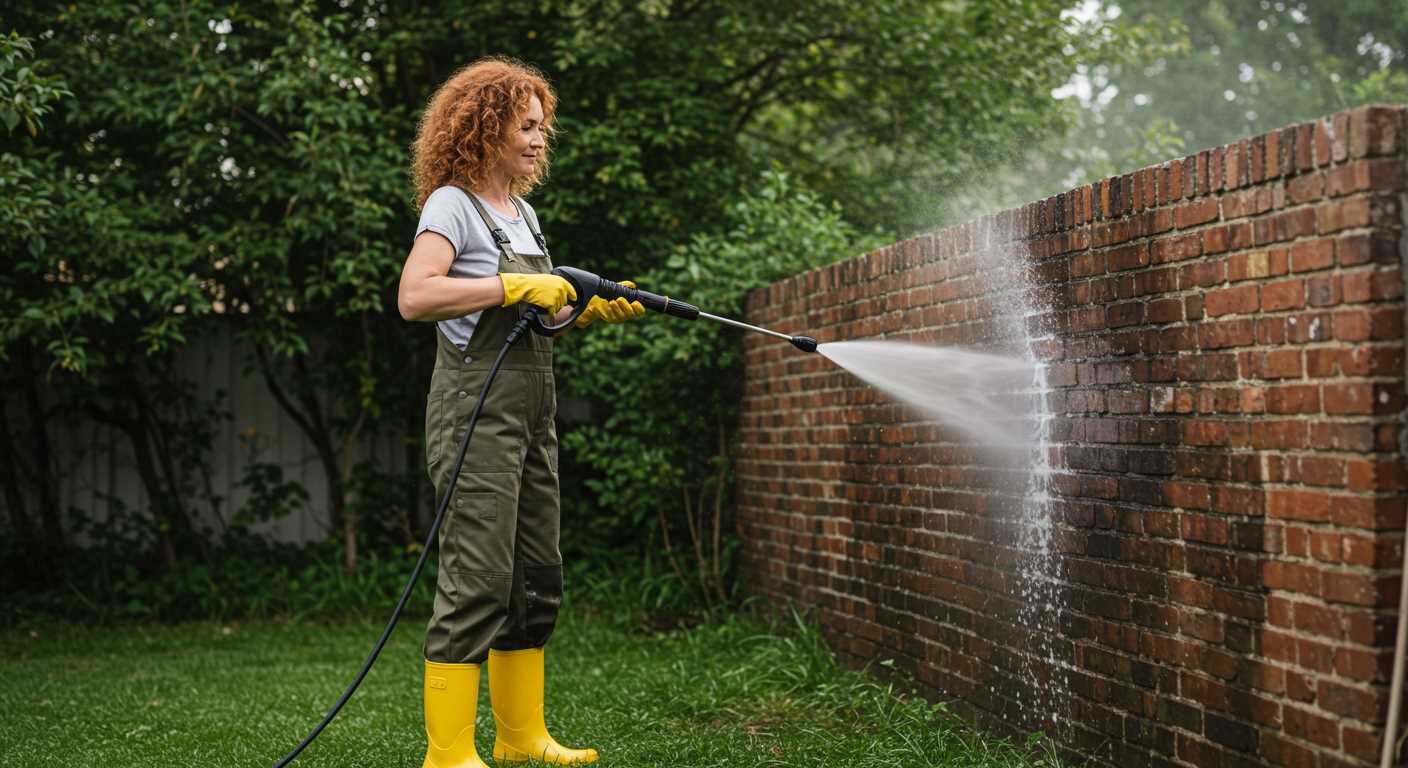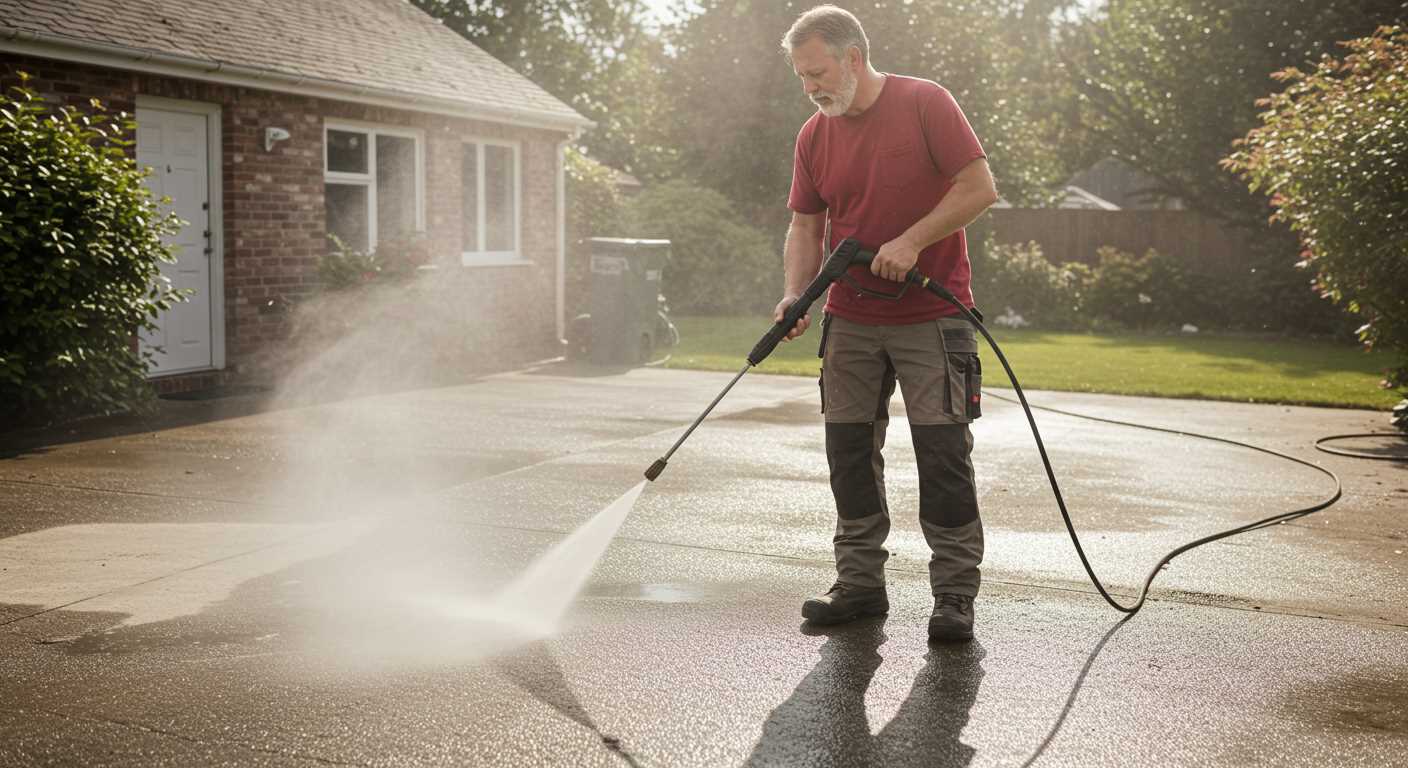



For most cleaning tasks around the home, a range of 1300 to 2000 psi serves well. This level is effective for removing dirt from surfaces such as driveways, decks, and patio furniture without damaging the material. Soft washing applications, particularly on delicate structures like shingles or painted surfaces, benefit from even lower settings, typically from 1000 to 1500 psi.
When tackling stubborn grime or challenging stains, bumping it up to 2000 to 3000 psi can be considered. This range is typically suitable for cleaning concrete and other hard surfaces. However, caution is necessary as going beyond this level can risk etching softer materials. For industrial applications, specialised equipment exceeding 3000 psi is recommended, paired with appropriate nozzles and cleaning agents.
In practice, evaluating the surface material and type of dirt is crucial in selecting the right power. For softer woods or painted surfaces, keeping it at the lower end ensures safety while achieving satisfactory results. Regular maintenance of equipment and selecting the right nozzles further enhances cleaning efficiency across various applications.
Understanding PSI and GPM for Power Washers
PSI, or pounds per square inch, indicates the force of water emitted from the nozzle, while GPM, or gallons per minute, measures the flow rate. A balanced combination of these two metrics is crucial for cleaning tasks.
For heavy-duty applications, such as removing grease or oil stains, look for machines that deliver around 3000 PSI coupled with 2.5 GPM. This ratio offers sufficient force and water volume to tackle tough jobs efficiently.
On the other hand, for lighter tasks, like cleaning vehicles or outdoor furniture, 1500 to 2000 PSI and 1.5 to 2.0 GPM work well. These numbers provide effective cleaning without causing damage to more delicate surfaces.
The nozzle type also influences the outcome; a narrow nozzle increases PSI while a wider nozzle enhances GPM. Opt for adjustable nozzles that allow flexibility, enabling you to switch settings based on the specific cleaning needs.
Always consider the material of the surface being cleaned. Higher PSI is not always better, as excessive force can harm softer materials. Consult the manufacturer’s guidelines of the item being cleaned to avoid any mishaps.
Ultimately, understanding the relationship between PSI and GPM enables you to select the right equipment for various cleaning scenarios, maximising efficiency and effectiveness.
How to Choose the Right Pressure for Different Surfaces
For driveways and concrete, aim for 3000-4000 PSI. This level will lift the toughest stains like oil, grease, and grime without damaging the surface.
Wooden decks and fences require more care. Set the device between 1200 and 1800 PSI. This range effectively cleans dirt without risking splintering or etching the wood.
For painted surfaces, keep it at 1500 to 2000 PSI. This effectively cleans while protecting the paint from peeling or chipping.
Brick and stone can withstand higher levels, around 2000 to 3000 PSI. This will ensure thorough cleaning without compromising the integrity of the masonry.
Vinyl siding typically does well at 1300 to 2000 PSI. This is gentle enough to avoid damage while clearing dirt and mould effectively.
When tackling vehicles, 1200 to 1900 PSI is optimal. Care needs to be taken to avoid scratches and damages to the paint.
- Concrete & Driveways: 3000-4000 PSI
- Wood Decks & Fences: 1200-1800 PSI
- Painted Surfaces: 1500-2000 PSI
- Brick & Stone: 2000-3000 PSI
- Vinyl Siding: 1300-2000 PSI
- Vehicles: 1200-1900 PSI
Always test the equipment on a small, inconspicuous area before carrying out a full clean. Adjust settings as necessary to achieve the best results on each surface type.
Factors Influencing Optimal Pressure Settings
Surface material significantly impacts ideal settings. For delicate surfaces like wood, a lower setting between 1000-1500 PSI works best. Conversely, concrete can withstand higher intensity, often around 3000 PSI.
The type of dirt or grime also plays a key role. Heavy grease and oil require higher force, typically around 2500-3000 PSI, while light mildew can be removed efficiently at about 1500 PSI.
Distance from the surface must be considered. Increasing distance reduces impact, so maintaining a distance of 12-24 inches is necessary for achieving effective cleaning without damage.
Water temperature can enhance cleaning efficiency; hotter water tends to break down dirt more easily. Using hot water around 150°F (65°C) optimises the performance of your equipment.
Environmental factors such as wind and humidity should not be overlooked. Wind can disperse water sprays, reducing efficiency, while high humidity can lead to surface dampness, requiring adjustments in the washing technique.
Lastly, hose type and nozzle selection contribute significantly to the effectiveness. A narrow nozzle focuses the force, suitable for tough stains, while a wider dispersion pattern is ideal for larger areas.
Common Applications and Recommended Pressure Levels

For cleaning typical driveways, around 3000 PSI is ideal. This level efficiently removes grime and oil stains while being safe for concrete surfaces.
Deck maintenance often requires a gentler touch. Use 1500 to 2000 PSI for wooden surfaces to prevent damage. This range helps lift dirt without risking splintering.
When tackling patio furniture or grills, aim for 1300 to 1600 PSI. This ensures thorough cleaning without harming delicate finishes.
Vehicle cleaning is best achieved with 1200 to 1900 PSI. This range allows for the removal of dirt and road grime while protecting paintwork.
For walls, depending on material, 2000 to 3000 PSI works well. Brick surfaces might handle the upper end, whereas vinyl siding can be cleaned safely at lower settings.
| Application | Recommended PSI |
|---|---|
| Driveways | 3000 |
| Decks | 1500 – 2000 |
| Patio Furniture | 1300 – 1600 |
| Vehicles | 1200 – 1900 |
| Walls (Brick/Vinyl) | 2000 – 3000 |
For various surfaces, adapting settings is crucial. Conduct tests on a small area when unsure to determine the most effective outcome.
Safety Precautions When Using High Pressure

Always wear protective gear, including safety goggles, gloves, and non-slip footwear. This reduces the risk of injury from flying debris or slipping on wet surfaces.
Before starting, inspect the equipment for any damage or leaks. Ensure all connections are secure and hoses are free of kinks to prevent accidents during operation.
Maintain a safe distance from the surface you’re cleaning. Holding the nozzle too close can cause injury or damage to the material being cleaned. A distance of 2 to 3 feet is usually advisable.
Keep children and pets at a safe distance while in use. The noise and spray can be alarming, and high-velocity water may harm them.
Always direct the spray away from yourself and others. The intense force can cause injury if directed toward someone’s body. Be mindful of your stance and ensure stable footing.
Before adjusting the setting or changing nozzles, switch off the machine. This can prevent accidental discharge and potential injury.
Utilise proper electrical safety measures if using an electric model. Ensure that the power source is grounded and avoid using the washer in wet conditions to prevent electrical shock.
Store equipment properly after use. Disconnect hoses and securely store nozzles and attachments. This prevents damage and prolongs the lifespan of the unit.
Adjusting Pressure Settings on Your Power Washer

Start by checking the specifications of your unit, as many come with adjustable features tailored for various tasks. When adjusting, ensure to gradually change the settings while monitoring the surface response. A gentle approach minimises risk of damage to softer materials.
Step-by-Step Adjustment Process
1. Disconnect the water supply before making any changes to avoid unintended spray.
2. Locate the pressure dial or switch; this is typically found near the handle or control panel.
3. Set the desired level according to the task at hand–from a light clean at 1000 PSI for delicate surfaces to higher settings for concrete or stone.
4. Reconnect the water source and turn on the machine. Test on a small area before full application to confirm effectiveness and ensure no adverse impact on the surface.
5. Fine-tune the settings as necessary until optimal results are achieved.
Final Tips
Remember that different attachments, such as nozzles, significantly influence the outcome. For instance, a wider nozzle delivers a softer spray, suitable for fragile areas, while narrower options amp up the force for tougher stains. Continually assess your settings throughout use to align with any changes in task or material. This approach ensures both efficiency and care.
When to Seek Professional Pressure Washing Services
Consider hiring experts in situations where large areas, intricate details, or specialised surfaces are involved. If you’re facing any of the following scenarios, it’s advisable to consult with professionals:
- Stubborn stains: For persistent marks from oil, rust, or mildew that resist typical cleaning, trained personnel possess advanced equipment and techniques for effective removal.
- Large spaces: Tasks involving extensive areas such as driveways or large patios often require commercial-grade units, best handled by service providers.
- Complex surfaces: If working with delicate materials like wood or speciality stones, professionals can make informed choices to prevent damage.
- Safety concerns: High ladders or rooftops pose risks; licensed services can ensure procedures are executed safely.
- Time constraints: When time is limited, hiring experts allows you to maximise productivity without sacrificing quality.
- Restoration projects: For property refurbishments or deep cleaning prior to sale, professionals can enhance curb appeal effectively.
In my experience, investing in skilled services not only saves time but also mitigates the risk of damage to your property. Always evaluate the task at hand to determine whether calling in help is the better choice.









